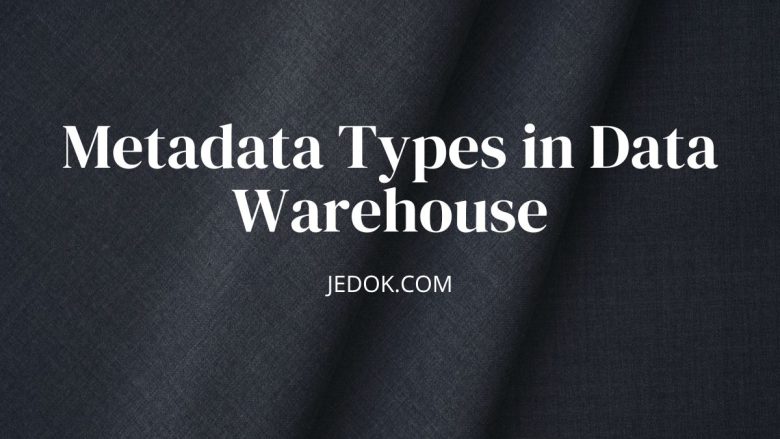
Data warehouses are central repositories. They store large amounts of structured data from many sources. They are meant to help with decision-making. They do this by giving a full and unified view of organizational data. Metadata is essential for efficiently managing and utilizing this data. In this blog post, we will look at the kinds of metadata in data warehouses. We will cover their importance and how they help data warehouses run well. We will go over what metadata is. We will cover the types unique to data warehouses. We will provide examples to show its importance.
What is Metadata?
Metadata is information about other data. It adds context and meaning to raw data, making it easier to understand, find, and use. Metadata in data warehouses refers to information about data sources. It includes processes for changing and loading data. It also covers the structure and organization of data in the warehouse. It is the blueprint. It guides users and applications in dealing with real data well.
Types of Metadata in Data Warehouses
Metadata in data warehouses can be broadly categorized into three main types:
- Business Metadata
- Technical Metadata
- Operational Metadata
Business Metadata
Business metadata adds context and meaning to the data. The data is stored in the data warehouse from a business standpoint. It contains information to help business users. They can understand the data in terms of business concepts and words.
Examples of Business Metadata:
- Business Definitions describe business terms and concepts. They include terms like “customer,” “order,” and “revenue.”
- Data ownership refers to information about the data’s owner, including their contact details.
- These are the Data Usage Guidelines. They tell you how to use the data well. This includes any business rules or limits.
- Performance Metrics define and calculate key performance indicators (KPIs) and other metrics. These are used for business analysis.
Importance of Business Metadata:
Business metadata is crucial. It bridges the gap between technical data and business users. It gives a common language. This language lets business users understand and use the data well for decisions. For example, a sales manager can use business metadata. They can use it to see how “total sales” are calculated and what data sources are involved. This ensures that the data is interpreted correctly.
Technical Metadata
Technical metadata provides detailed information. It is about the structure and organization of data in the data warehouse. It includes info about data sources. It also covers data changes, data storage, and data retrieval.
Examples of Technical Metadata:
- This metadata has details about the source systems. It includes the names of the databases, tables, and columns.
- ETL Processes handle the Extract, Transform, Load (ETL) processes. They include data extraction methods, transformation rules, and load schedules.
- Data Models include diagrams and descriptions. They show the data warehouse’s schema. This includes tables, columns, data types, and relationships.
- This section has details about indexes and partitions. They are used to optimize data storage and retrieval.
- Data Lineage is the tracing of data from its source. It goes through the stages of transformation and loading into the data warehouse.
Technical metadata is critical for data warehouse administrators and developers. It provides the information required to design, implement, and maintain the data warehouse. For example, understanding ETL processes helps resolve data loading issues. Data lineage is critical. It ensures data accuracy and consistency.
Operational Metadata
Operational metadata describes the day-to-day operations and use of the data warehouse. It provides data on data loads. It also covers system performance, user activities, and data access patterns.
Examples of Operational Metadata:
- Load History records data load operations. They include load times, volumes, and any errors.
- System Performance Metrics show information about system performance. They include query response times, resource use, and data storage.
- These are logs of user interactions with the data warehouse. They include the queries executed, reports generated, and data accessed.
- Data Access Controls limit data access. They include information on permissions and restrictions. This information covers user roles and security policies.
You need this data to run and watch data warehouses daily. It helps to ensure that the data warehouse runs efficiently and securely. For example, load history records can identify and fix data loading issues. User activity logs show how the data warehouse is used and can aid performance.
Integration and management of metadata in data warehouses.
To manage metadata well in data warehouses, you must combine metadata from many sources. And, you must keep it. This process can be difficult due to the volume and complexity of the metadata. Here are some important strategies for managing metadata in data warehouses:
Centralized Metadata Repository
Maintaining a centralized repository for metadata ensures consistency and accessibility. A single repository holds all metadata. It provides the truth. It makes managing and using it easier. It lets many users and apps access the same metadata. This ensures that everyone has consistent information.
Automated Metadata Collection
Automating metadata collection and updating reduces the likelihood of errors and omissions. Automated tools can get metadata from source systems. They can also get it from ETL processes and data warehouse parts. They ensure the metadata is correct and up to date. This automation also saves time and effort. It frees administrators to focus on more important tasks.
Metadata Standards
Adopting and adhering to industry metadata standards improves integration and interoperability. Standardized formats and protocols enable smooth metadata exchange between systems. This standardization also makes metadata management easier. It sets a consistent framework for organizing and describing metadata.
Audits occur regularly.
Regular audits of metadata ensure their accuracy and completeness. Audits can find differences and gaps in metadata. This lets administrators fix problems quickly. Regular audits also help keep data quality and integrity high. They do this by ensuring that metadata accurately reflects the data it describes.
Security Measures
Strong security measures protect metadata from unauthorized access. They also maintain its integrity. Metadata often contains sensitive information. It is about data sources, ETL processes, and system configurations. This makes it a prime target for attacks. Measures like encryption, access controls, and monitoring can keep data breaches away.
Conclusion
Metadata is crucial to data warehouses. It holds critical info about data, its structure, and management. You must understand three types of metadata. They are: business, technical, and operational. This knowledge is crucial for data warehouse design, management, and use. Best metadata practices ensure accurate, consistent, and secure data in organizations. This results in more efficient and reliable data warehouses.


